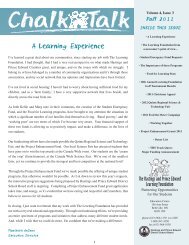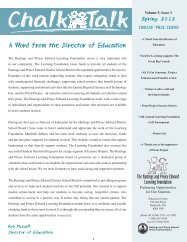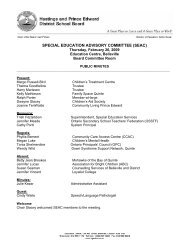Grade 11 Healthy Active Living Education Additional Supports ...
Grade 11 Healthy Active Living Education Additional Supports ...
Grade 11 Healthy Active Living Education Additional Supports ...
You also want an ePaper? Increase the reach of your titles
YUMPU automatically turns print PDFs into web optimized ePapers that Google loves.
<strong>Healthy</strong> Relationships and Sexuality<br />
Public Profile<br />
Unit #3 Activity #2<br />
Teaching Learning Strategy #2<br />
Teacher Resource (Background Information)<br />
Catholic Profile<br />
Unit #4 Activity #3<br />
Teaching Learning Strategy N/A<br />
Instructions:<br />
Students will work with a partner and think of couples they know who are in a healthy<br />
relationship. Students will list the characteristics that they feel make the relationship<br />
healthy. Together as a class, develop a list of the characteristics that the class can agree<br />
upon. Students will record the list in their notebook. Remind students that their own list<br />
is a personal thing and that it does not have to match the class list. Upon completion of<br />
the class-generated list, students will compare their list with the teachers/student<br />
worksheet called ÒCharacteristics of a <strong>Healthy</strong> Relationship ChecklistÓ.<br />
Characteristics of A <strong>Healthy</strong> Relationship<br />
There is no such thing as a perfect relationship. There will be times when partners are<br />
angry or defensive, but none of this should lead to abuse. There are some key elements<br />
of a healthy relationship. Being aware of these elements will help an individual realize<br />
when a relationship is unhealthy.<br />
Key Elements of a <strong>Healthy</strong> Mature Relationship:<br />
Respect<br />
Mutual respect means that both parties care for themselves as well as each other.<br />
This is evident through respecting each otherÕs decisions or choices and listening to<br />
explanations of why those decisions were made. Caring partners are aware of each<br />
otherÕs boundaries, need for personal space, and vulnerabilities. They do not take each<br />
other or their relationship for granted. Neither person puts down or denigrates the other.<br />
If one person in the relationship changes as a result of what they have shared, the other<br />
person does not gloat, thinking they have caused the change. People change because they<br />
want to. Causing change in a person (e.g., dress style, hairstyle, group of friends, sexual<br />
demands) through manipulation, coercion, and threats are not healthy. Both parties<br />
understand that you cannot change one another. And things that need to be changed in a<br />
relationship come through effective communication and mutual agreement.<br />
Consensual Enjoyable Intimacy<br />
The sexual experience in a relationship should be equitable, mutually agreed upon and<br />
enjoyed. Both parties should feel free to express their needs and boundaries and have<br />
them respected, so that one person does not end up feeling like they have to give in to the<br />
other. If one person does not want to have sex, their wishes must be respected. In<br />
healthy relationships, problems and issues related to sexuality are openly communicated<br />
without fear.<br />
<strong>Grade</strong> <strong>11</strong> <strong>Healthy</strong> <strong>Active</strong> <strong>Living</strong> <strong>Education</strong> (PPL30), Module #1 <strong>Healthy</strong> Relationships and Sexuality<br />
Page 35
















